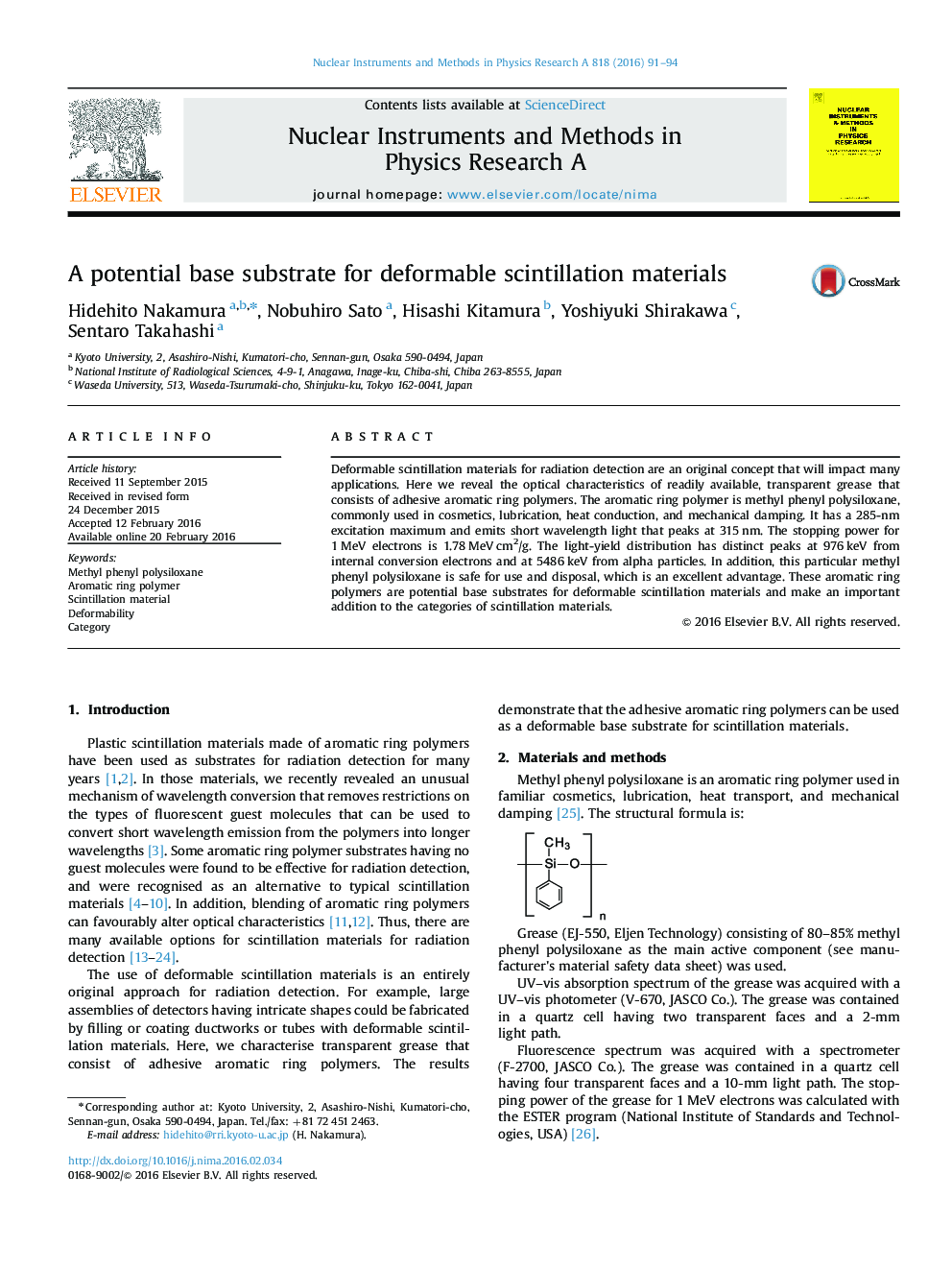| Article ID | Journal | Published Year | Pages | File Type |
|---|---|---|---|---|
| 8170740 | Nuclear Instruments and Methods in Physics Research Section A: Accelerators, Spectrometers, Detectors and Associated Equipment | 2016 | 4 Pages |
Abstract
Deformable scintillation materials for radiation detection are an original concept that will impact many applications. Here we reveal the optical characteristics of readily available, transparent grease that consists of adhesive aromatic ring polymers. The aromatic ring polymer is methyl phenyl polysiloxane, commonly used in cosmetics, lubrication, heat conduction, and mechanical damping. It has a 285-nm excitation maximum and emits short wavelength light that peaks at 315Â nm. The stopping power for 1Â MeV electrons is 1.78Â MeVÂ cm2/g. The light-yield distribution has distinct peaks at 976Â keV from internal conversion electrons and at 5486Â keV from alpha particles. In addition, this particular methyl phenyl polysiloxane is safe for use and disposal, which is an excellent advantage. These aromatic ring polymers are potential base substrates for deformable scintillation materials and make an important addition to the categories of scintillation materials.
Related Topics
Physical Sciences and Engineering
Physics and Astronomy
Instrumentation
Authors
Hidehito Nakamura, Nobuhiro Sato, Hisashi Kitamura, Yoshiyuki Shirakawa, Sentaro Takahashi,
